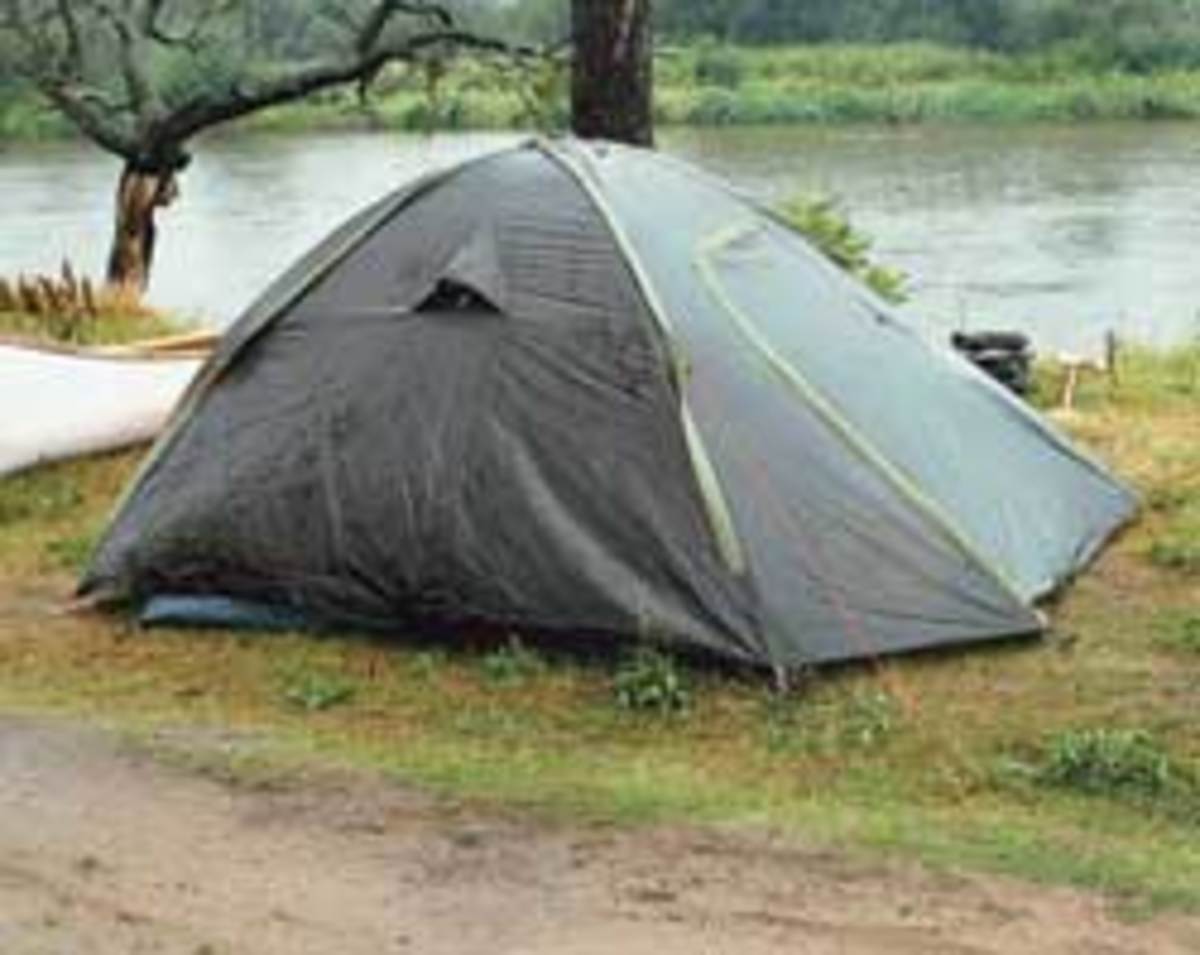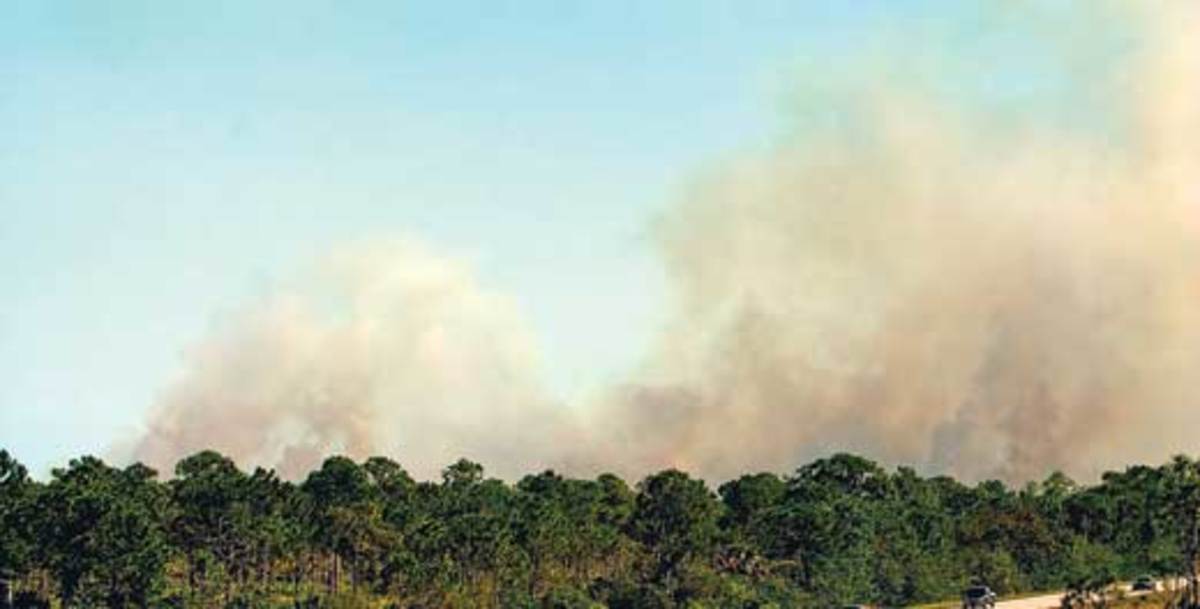
Wildfires in the West. Heavy rains in the Midwest. Flash floods in the Southwest. You’ve seen the destruction wildfires and torrential floods can wreak, even when quick response and rescue are at hand.
If you’re horse camping, these extreme conditions can spell disaster, especially if you’re in a remote area, where evacuation is difficult. And you need to keep your horse safe, as well as yourself, which add to the challenge of quick action in a pressure-packed emergency situation.
Here, we’ll first explain how to avoid a fire or flood while horse camping, with smart planning. Then we’ll give you lifesaving tips should a disaster occur despite your best-laid plans. We’ll also tell you how to extinguish your own campfire, so you don’t inadvertently start a devastating forest fire.
Smart Planning
The best way to prevent a horse-camping emergency is to stay out of harm’s way altogether. A week before your camping trip, check the weather forecast for storms and/or high fire danger for your planned destination. Check the forecast every day until right before you leave on your trip. If there are danger signs, cancel your trip, or choose another destination.
A few weeks before your trip, maintain your rig, so it’ll be dependable should you need to move out of the way quickly in an emergency. Also check the integrity of your tack and equipment to minimize the risk of a breakage in an emergency situation. Bring along one extra halter per horse, just in case.
Work with your horse so he’ll trailer-load with ease. Make sure any horses sharing your trailer also load easily. Learn to hitch up your trailer quickly, day or night – in the dark, without a flashlight.

Flood-Safety Tips
To minimize flood risk in the event of a downpour, never camp in a location that has – or has ever had – water flowing through it. Even if a riverbed, streambed, wash, or arroyo is bone dry when you pull in, water will still collect in these low-lying runoff areas in a storm.
Even if there isn’t a cloud in the sky, water can come unexpectedly from a storm in the mountains miles upstream, then collect in valley riverbeds. If the beds and channels are overwhelmed, the water will run outside the banks, flooding an entire low-lying region. This runoff can flood up to 30 or 40 miles before it dissipates and soaks into the riverbed as it flows along. And one thing it can wash away and destroy is your camp by the river!
Select a high campsite, out of water-flow areas. In a meadow, keep to the edges on the higher contours. Camp at least 150 feet from the edge of live (flowing or standing) water, and the same distance from the high-water mark of a dry riverbed or lakebed. Note that this distance also meets most agencies’ environmental regulations for camping near water.
Then keep your eye on the sky. Watch for gray or black clouds in the distance that could bring a downpour. If you spot an impending storm, trailer or ride to higher ground, and wait it out.

Fire-Safety Tips
Fire is the most feared of all disasters. A wildfire can spread in the blink of an eye. It can start from natural causes (such as lightning), or it can be manmade. Common causes of manmade fires include an unattended or illegal campfire, a carelessly tossed match or cigarette, and arson.
Fires can spread by jumping from treetop to treetop, racing across dry meadows and brush, and blowing over desert land. It’ll soon make the air yellow and hazy. The sun will become red. Smoke will hang in the air.
If there’s a fire near your campground (or area trail), you’ll likely smell the smoke first. The smell of smoke is a red-alert. Scan the area to find the smoke’s source, if possible. (Binoculars are helpful.) If the smoke is coming from a legal campfire, that’s still good to know. If the smoke isn’t coming from a campfire, or you can’t find the smoke’s source, pack up (if time), and move out.
To enhance your and your horse’s safety in high-fire-risk zones, follow these basic fire-safety guidelines.
• Know your escape route. You might need to make a retreat in pitch-black darkness. To quickly find your way in an emergency, carefully observe your inbound route. Check the mileage from the main road to the parking area, and mark it on your roadmap. Also note and mark milestones and landmarks, such as bridges, natural formations, and places where the road narrows.
• Look for alternative routes. As you travel to the camping area, find alternative evacuation routes. Watch the road, and mark your roadmap. (Tip: Before you leave, copy and enlarge the area map, and highlight your route, for ease of reading.)
• Park facing the exit. Whether you park your rig in a parking area or at your campsite, turn it around so it faces the exit, in case you need to make a fast getaway.
• Avoid dry branches. When selecting a campsite, avoid areas with snags, and dead branches/trees. In forested areas, find a site that has healthy, live trees.
• Keep a neat camp. Put away equipment, tack, and feed every night, so it’ll be easy to pack up in a hurry. Keep your trailer’s stock compartment clear for quick loading. If a fire is fast approaching, don’t try to pack; just take what can be loaded easily.
• Hold a fire drill. If you’re camping with one other person, make sure you each know what to do in the event of an emergency evacuation. If you’re camping with a group, designate one person to be in charge of the evacuation, and conduct a dry run.
• Protect lives first. If you have to evacuate immediately, take “life” only. Hitch up, load up, and go! Equipment and material goods can be replaced; lives cannot.
• Follow your gut. If you smell smoke and have a feeling you should leave, do so. It’s better to leave needlessly than to leave too late. Don’t let other campers talk you into staying.
• Leave the blanket on. If your horse is already blanketed, leave the blanket on. If the smoke is heavy or embers are in the air, pour water on the blanket, then load up. Close all trailer windows and vents to keep out embers and sparks.
• Leave balky horses behind. If your horse balks too long at trailer-loading, and you need to evacuate immediately, you’ll unfortunately need to leave him behind. Turn him loose without a nylon halter, which can snag. (Some prefer to leave on a leather halter, which will break under stress.) Quickly braid an identification tag into his tail (if time), and write your last name and phone number on his hip with a grease pencil. If you have a bit more time, load the willing horses first, then try loading the balky horse again.
• Leave as horses are loaded. Don’t wait for your traveling companions. But if you come upon a chaotic traffic jam, consider pulling over and directing traffic, if you can do so safely. If officials are present, clear out under their direction.






